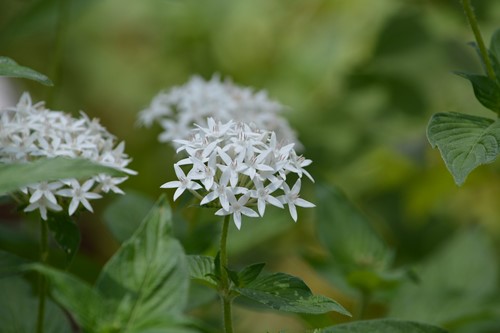Email: [email protected]

Pentas plants are a favorite among butterflies and other pollinators. Their clusters of tiny, star-shaped flowers come in multiple colors and can grow anywhere as an annual. As well as supporting pollinators, pentas are completely pet-safe, making them an excellent choice for any pet owner's garden. Here are some of the basic care tips for growing pentas in your garden:
Bountiful and healthy pentas blooms depend on getting the perfect amount of sunlight. For the best flowers, plant pentas somewhere they'll get at least three hours of direct sun. They can tolerate some shade during the morning or afternoon, but will get stretched out and leggy in between blooms without enough direct light.
Pentas require regular watering, making them a good fit for any garden with an irrigation system already built. Otherwise, keep the soil moist at all times so they don't dry out completely. While your pentas plant can survive drier conditions, parched plants are very susceptible to pests like spider mites. You should also avoid watering over the top of the plant, as brown spots can develop on the leaves from mineral deposits.
Pentas are tropical plants and love warm temperatures with high humidity. If you live in a drier region, you may need to mist your plant regularly to maintain adequate moisture levels. Pentas will not tolerate the cold, but can overwinter in pots if you bring them indoors. Make sure to bring them indoors before the first frost or take healthy cuttings to propagate again in the spring.
Pentas are shrubs and will maintain a shallow, bushy growth pattern as long as they get enough light. However, as the plants mature, they may begin to stretch out and get leggy. Pruning isn't necessary if you're only growing them as an annual for a single season, but if you want them to come back in the spring, trim down the stems low to the ground to encourage healthy new growth.

Georgina was born and raised in Paris, France. She studied Mathematics and Biology at the University of Paris. She settled in Marin County where she and her husband raised their two children. She was on tour with Cirque du Soleil, managing and chaperoning her young daughter who was one of the show's featured performers. During this time, they worked and traveled throughout Canada and the USA. Georgina appreciates the beauty of the Bay Area and Sonoma. She especially enjoys the nice weather, diversity, and culture. She became a tax preparer and an Enrolled Agent. She decided to become a Realtor® and is pleased to join Keller Williams Realty. For fun, she enjoys traveling and playing the Piano.
Realtor®
DRE #02104684
415.342.6794